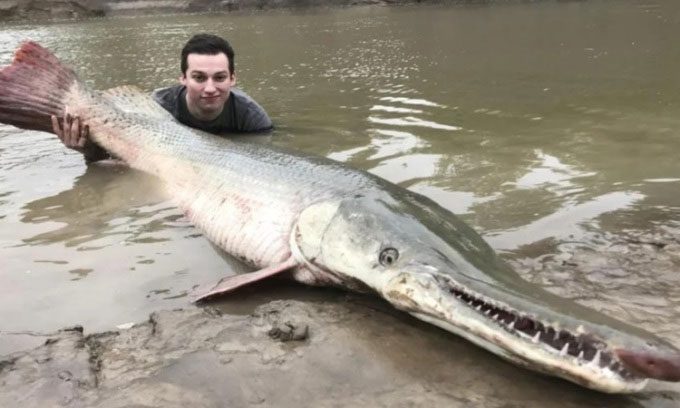Researchers have discovered that the gar fish—dubbed a “living fossil”—has the slowest evolutionary rate among all vertebrates and jawed animals.
The gar fish is a living fossil that has changed at an extremely slow pace since its ancestors appeared during the age of dinosaurs 150 million years ago, according to research published in the journal Evolution. This slow rate of change indicates that this prehistoric fish evolves at the slowest molecular rate among vertebrates and jawed animals, as reported by Live Science on March 13.
The lineage of the gar fish (family Lepisosteidae) has existed for millennia, with the most anatomically modern species appearing in fossils from the late Jurassic period (145 – 163.5 million years ago). Seven species still alive today are distributed across lakes and rivers in North and South America, with one species occasionally inhabiting marine environments. In the new study, scientists examined gar fish alongside other long-stable species.

The gar fish has changed little since prehistoric times. (Photo: Newsweek).
Although many species closely resemble their fossil relatives, they have undergone evolutionary changes, albeit not easily recognizable. To be classified as a living fossil, an organism must share a common ancestor with an extinct lineage, show minimal changes in form compared to fossil relatives, and diverge into a small group of related species, according to lead researcher Chase Brownstein from Yale University.
The researchers used computational analysis to examine gene sequences derived from a common ancestor known as homologous genes, which revealed the rate of gene substitution or mutation over time. When a mutation repairs or alters a DNA sequence, it becomes a replacement gene, Brownstein explains.
The study found that some animals considered living fossils, such as the tuatara (Sphenodon punctatus), coelacanth (Latimeria chalumnae), and the hoatzin (Opisthocomus hoazin), differ significantly from their fossil relatives, even though they retain many characteristics. Among the 471 species surveyed, the gar fish and sturgeon exhibit the slowest gene substitution rates. The gar fish appears to evolve at a rate three times slower than any other living vertebrate on Earth.
Gene substitution leads to changes in form. Therefore, the slow gene substitution rate in this group of fish corresponds to a slow species formation rate, meaning their lineage does not differentiate into many new species with distinct forms like other groups. Instead, the few existing species have remained stable over long periods.
The gar fish evolves so slowly that two species separated by 100 million years of evolution can still interbreed. The North American alligator gar (Atractosteus spatula) hybridizes with the longnose gar (Lepisosteus osseus) in rivers in Texas and Oklahoma. Strangely, their hybrids are capable of reproduction. Artificial and natural hybrids are sometimes sterile, even when closely related, as seen in the case of the mule, a hybrid between a horse (Equus caballus) and a donkey (Equus asinus). Notably, the North American alligator gar and the longnose gar have not hybridized much throughout their evolutionary history, despite sharing a habitat for about 55 million years. Hybridization may occur due to the two species being forced to share spawning grounds in some riverine sandbars.
According to Brownstein, the study raises questions about how the gar fish’s genes and those of other living fossils remain so stable.


















































